The MSI Gaming Booth Tour with dGPUs in AIOs and Notebooks plus Motherboards
by Ian Cutress on June 29, 2015 3:00 PM ESTAll-in-Ones – The AX24 and G24 GE
My view on all-in-ones as compute devices does not seem to align well with what all-in-one manufacturers tell me. Nominally the sole all-in-one that gets much attention online is Apple’s iMac due to the role it has played in Apple’s line-up over the last five or so years. Nonetheless, the all-in-one manufacturers tell me that the PC-behind-a-monitor concept is growing in sales and has sufficient margin and volume to dedicate research and development towards building something customers want. I’ve not seen many AIOs in the wild – most usually in stores as separate stock check/help desks rather than in the home, but Intel has also been pushing the AIO strategy, even to the point of portable all-in-ones (massive 28-inch devices with a battery) in recent keynote speeches in the past couple of years. We’ve covered bits of the AIO market here and there, most often in news or at events such as the first 4K60p AIO at Computex last year, but we have not yet put resources to covering this element of the industry. For companies like MSI, to whom gaming is a focus, it seems that gaming branded all-in-ones are a potential viable market model. As a result, there were a couple of new concepts on display.
The main problem with all-in-ones from a gaming perspective is typically performance and graphics performance – strapping a desktop to the back of a monitor is not always the most space-efficient implementation, especially if you consider heat removal or power delivery. As a result, gaming on integrated graphics, particularly at 1080p or 4K, leaves an element of wanting more (although both Intel and AMD would argue, and our testing suggests, that you can still have a good experience at 1080p with integrated graphics on popular titles). The solution to this starts with equipping the AIO with an MXM graphics card similar to a laptop, which is what the Gaming 24GE 2QE is.
As the name suggests, a 24” IPS panel is paired with a laptop like configuration. The i7 mobile CPU on the HM87 chipset joins forces with a GTX 960M and for the model in front of us, featuring a 1080p display, should provide sufficient horsepower for eSports titles at the highest settings or AAA games at mid-range. I quizzed MSI on a 4K display, and they said that they would react to customer requests in that regard. Other hardware inside includes 16GB of DDR3L-1600, Killer networking and the inclusion of the Nahimic audio software. Storage is provided by dual SSDs in RAID 0 (‘MSI Super RAID’), and the display is a supposed ‘anti-flicker’ screen with an anti-glare finish. MSI’s terminology for this revolves around ‘less blue light’, which is perhaps something similar to the films/transparent glasses designed for at-monitor work to reduce eye-strain. MSI is currently working on the design of their gaming AIOs beyond a simple red-and-black colored livery and an MSI gaming logo.
The GTX960M at the end of the day is still a mid-range mobile component – arguably you could put one or two GTX 980Ms in such a device, much like the GT80 Titan laptop, and it would push some proper pixels. Rather than go down this route, MSI has gone a little mad and actually designed an AIO that supports a full sized graphics card.
On the left hand side we see the extra parts to implement the external graphics:
What we have here is essentially an AIO that loops in a full PCIe 3.0 x16 slot via a riser cable to a GPU mounted on the back of the panel. MSI’s design is not yet final, but they expect to be able to fit almost all reference designs in this bay with a mesh at the front for air intake (supporting blowers and other fan orientations) and a perforated edge to help with air removal:
As you can see, the GPU is mounted a little away from the panel in order to facilitate this around at least three of the edges. The GPU section itself has its own power supply module, requiring a second power brick in order to provide that power. MSI makes power bricks up to 330W, so I would imagine that any single silicon solution (i.e. non-dual GPUs) would work here.
The AX24 is to be designed around Skylake, which given other motherboards we have seen so far we can get multiple M.2 SSDs in PCIe 3.0 mode as part of the package. MSI is also including Killer networking as per usual, and the new Nahimic audio processing software. They were coy about whether the system uses a soldered down CPU or a replaceable CPU though, and at what TDP we might expect it to be. Though they are looking at 4K panels, adaptive sync technology was not mentioned. One of the poignant parts here is that an AIO design is almost like a laptop design, so we might see separate buttons to enable the external GPU, or extra buttons for 100% fan usage when the design is finalized.
MSI also exhibited the Pro 24 2M all-in-one, designed for a more enterprise look and feel. The specifications were pretty much as expected, taking the anti-flicker panel from the G24 but this time using Haswell based processors, integrated graphics, a 1080P 23.6-inch panel with SSD and HDD options.
That doesn’t sound anything great I admit, but there are a couple of non-standard features worth mentioning here. The first is technically an older feature I’ve seen in years gone by to do with webcams – placing a vanity filter via a physical sliding button:
Thus for anyone paranoid about peeping, rather than taping paper over the webcam, here is a physical switch. Alongside this, based on the ‘Pro’ nature of the Pro 24 2M, we get a COM port on the rear:
It’s a bad picture, but to the left of the network port we can see it. The device also comes with USB 3.0 ports, HDMI out, a card reader and gigabit Ethernet.


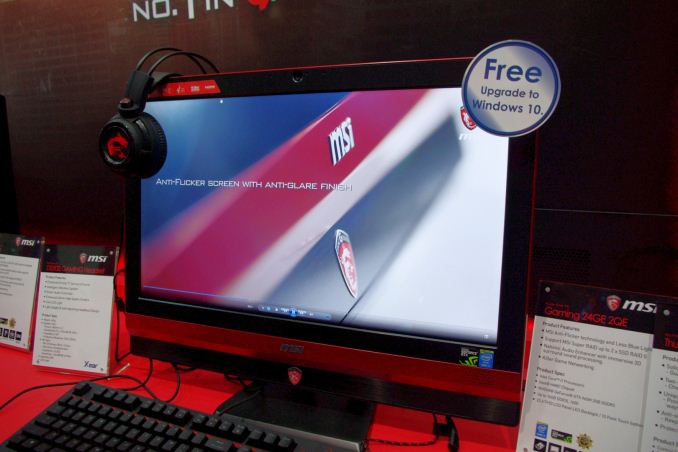
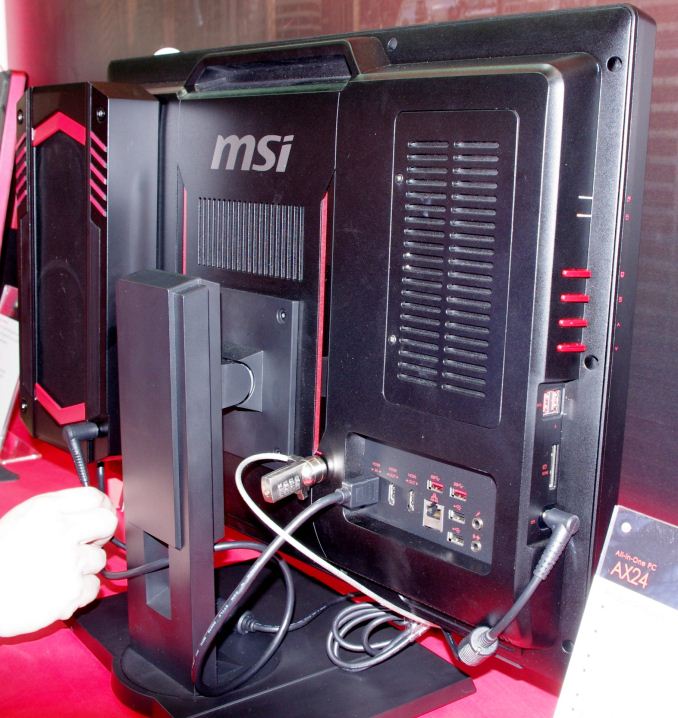
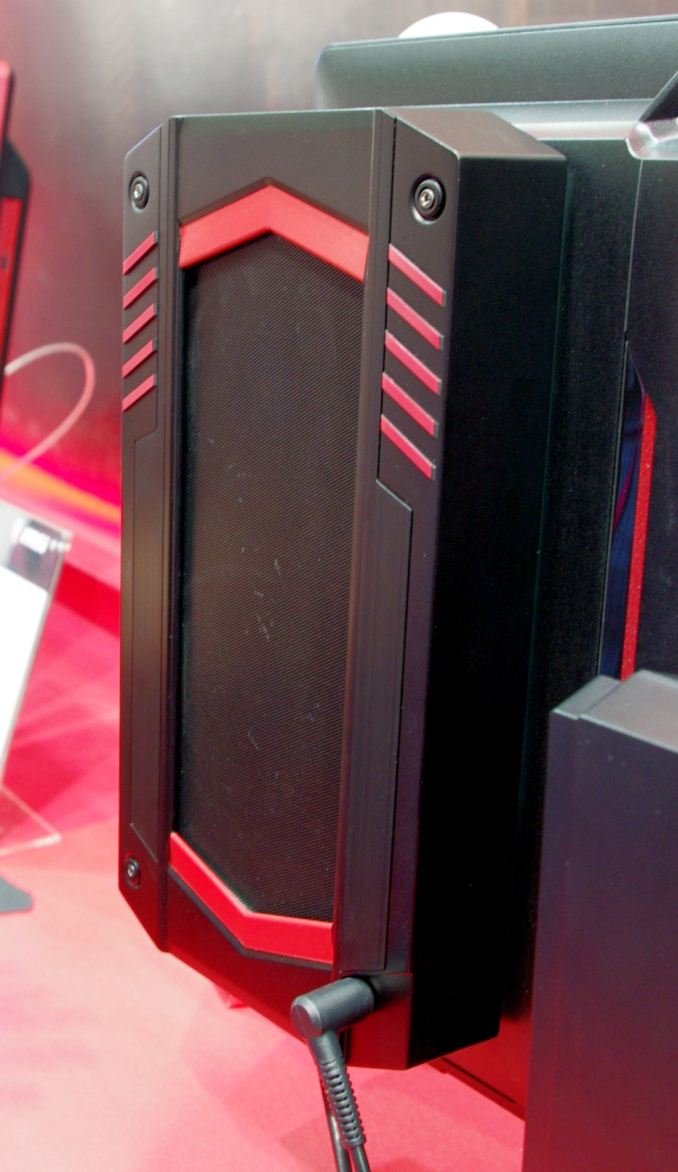
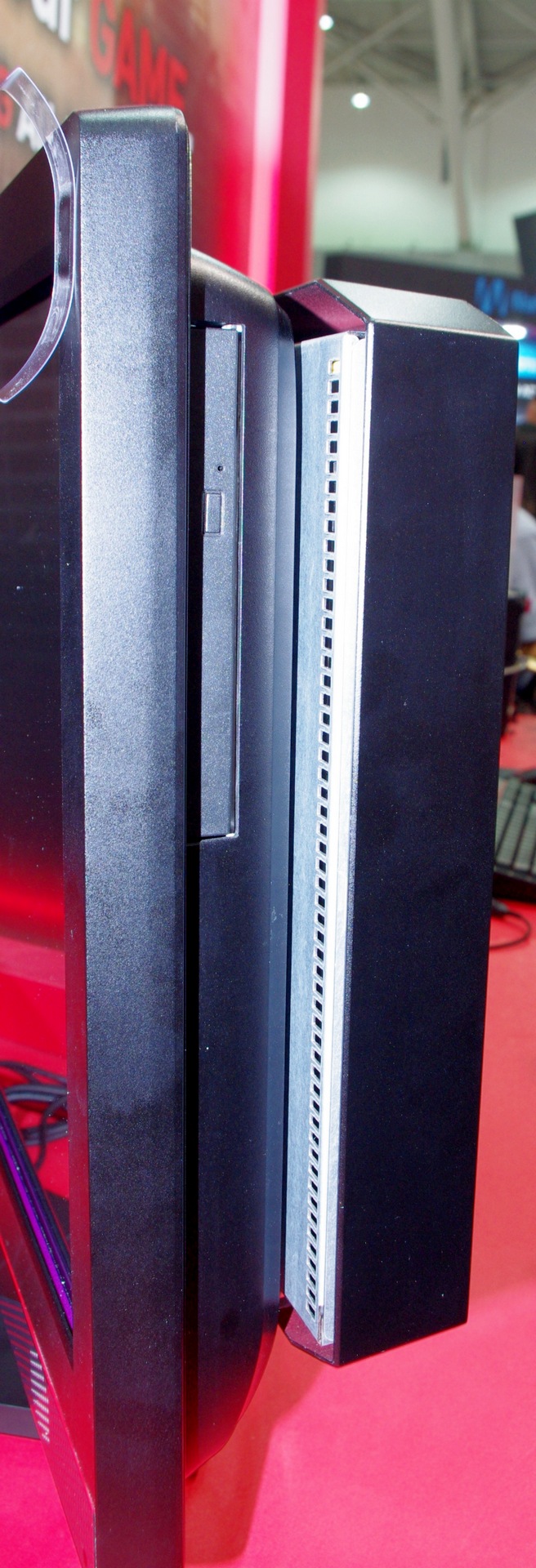
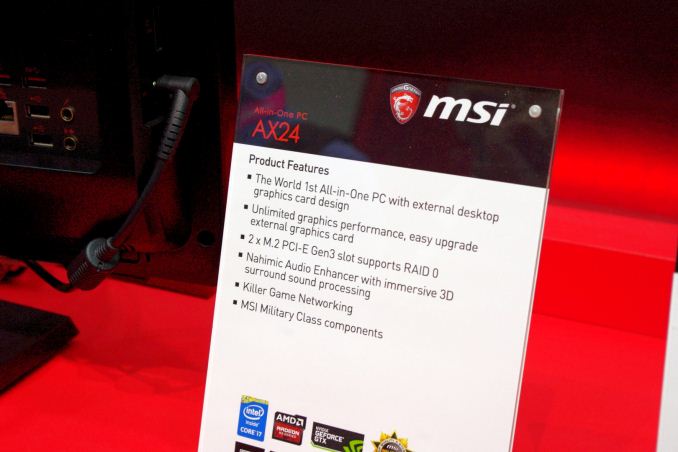
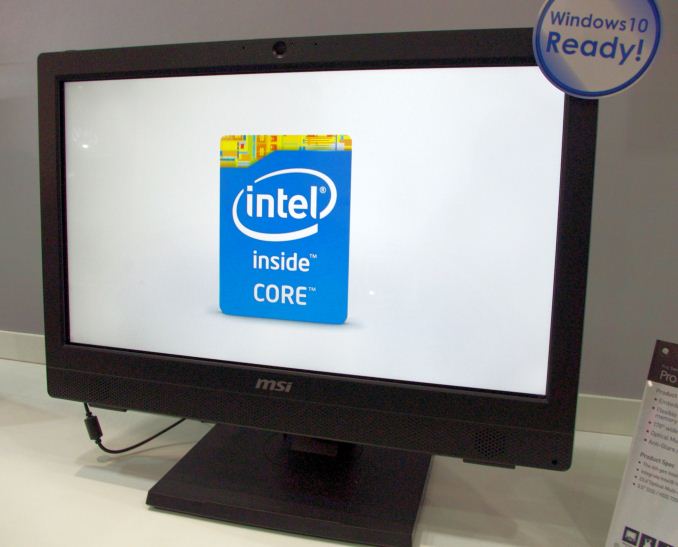
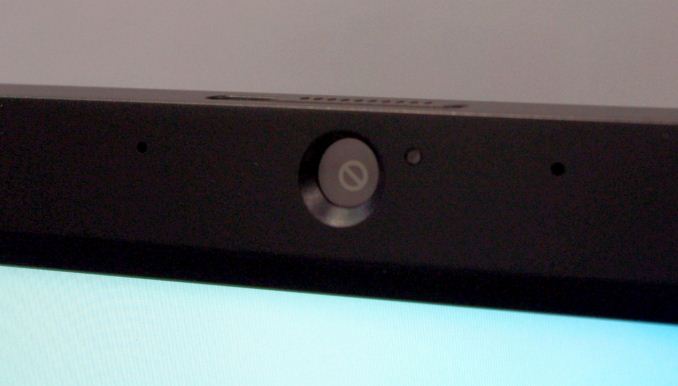

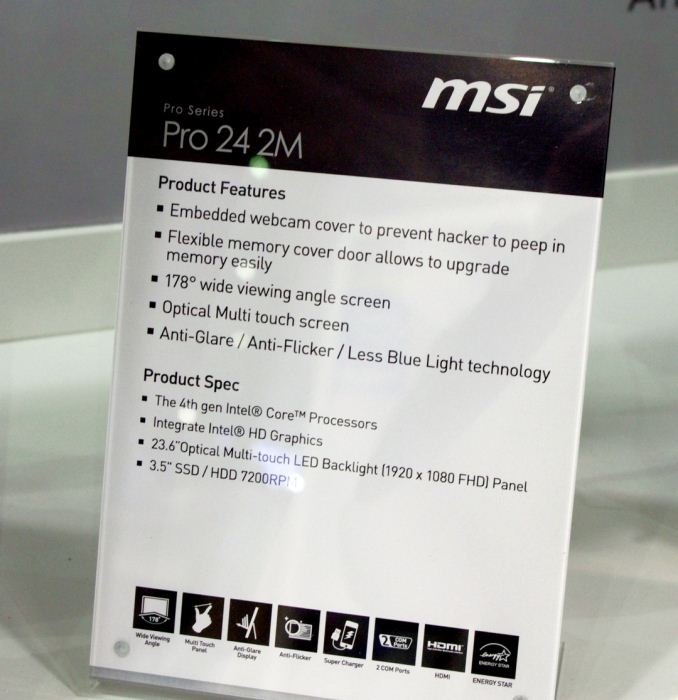








50 Comments
View All Comments
Turbinz - Monday, June 29, 2015 - link
Where is the Radeon Fury X review??? This site is a day late and a dollar short.Morawka - Monday, June 29, 2015 - link
AMD is a sponsor so they are probably giving amd time to optimize a driver that reduces image quality to increase benchmark scores.DanNeely - Monday, June 29, 2015 - link
As has been stated somewhere on the site almost daily (today on the twitter feed sidebar); it's been delayed because Ryan Smith has been ill. He's currently hoping to have it finished tomorrow.For the impatient (and to disspell silly conspiracy theories), scores were posted in bench several days ago.
Here is the Fury X (OCed version) vs the GTX 980 Ti.
http://anandtech.com/bench/product/1514?vs=1496
D. Lister - Monday, June 29, 2015 - link
"it's been delayed because Ryan Smith has been ill."It is sad that a site as big as AT cannot afford more than a single writer. But then again I suppose it was "just" a flagship product from a tech giant, it is not like this was important or eagerly awaited by a lot of enthusiasts or anything. :)
Ryan Smith - Monday, June 29, 2015 - link
The reality is that we're a very thin operation. This allows us to be nimble, but also allows us to publish those articles that we're genuinely interested in rather than having to succumb to clickbait to make ends meet. It's not perfect (no system is), but it's better than the alternative.chizow - Monday, June 29, 2015 - link
Idk Ryan, normally I'd agree with you but missing Fury X launch was pretty bad. 960 launch was obviously less high profile but still a pretty glaring hole in the midrange. And that review still isn't published.Anyways, at this point you probably did AMD a solid lol, Fury X was certainly a forgettable launch from AMD's perspective given the amount of hype leading up to it. Do you still think they launched it "exactly the way they wanted to?"
grrrgrrr - Monday, June 29, 2015 - link
Missing a launch where reviews just raise doubts is not a bad thing. A genuine review (and also GPU) is worth a thousand quick ones.Byte - Monday, June 29, 2015 - link
I've switched to AMD (because of mining and have over a dozen cards) and the Fury really isn't impressing me and might jump back to Geforce, but really hope we can get AMD to stay in business so we can have some nice competition and innovation. Hopefully Ryan can give AMD some light they really need!Samus - Monday, June 29, 2015 - link
Yeah these days mining on AMD GPU's is completely dead, and that was the only relevant reason to buy them over the last few years. nVidia has been killing it since the 600 series dollar-for-dollar in "most" games.nightbringer57 - Tuesday, June 30, 2015 - link
Not really.Until Maxwell, AMD cards still were very competitive, even if they were aging.
My Tahiti LE 7870/7950 hybrid was a steal for less than 200€ and may be the card that lasted me the most for its value. And even with the less-than-impressive Fury launch and the big gap in power consumption, AMD cards are still giving at least overall slightly better bang for your bucks in raw performance.